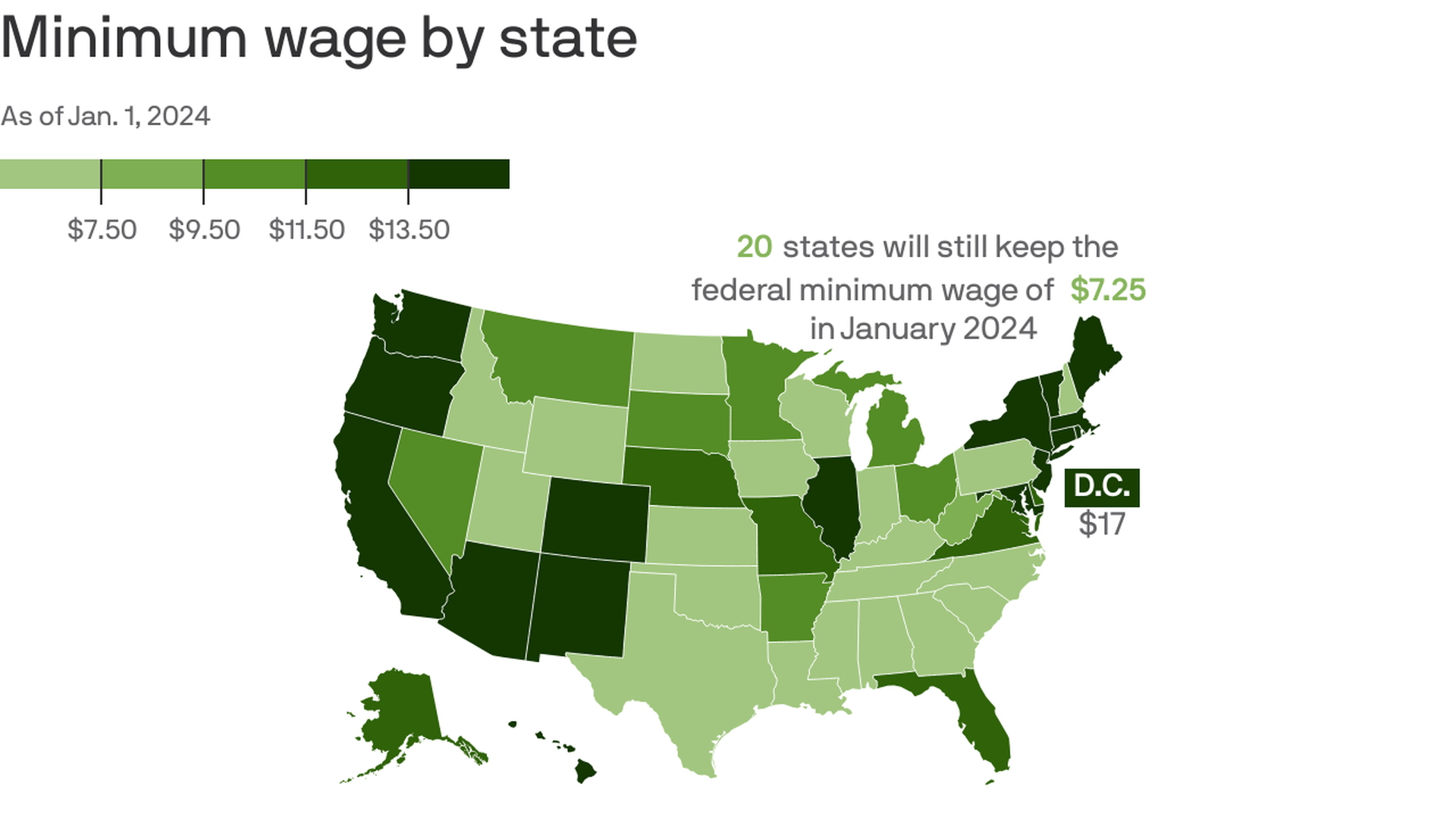Let’s talk about the 2024 GS pay scale because, let’s be real, who doesn’t want to know how much they could be earning in the federal workforce? If you’ve been eyeing a job with Uncle Sam or are already part of the team, understanding this pay scale is like having a cheat code for your career. Whether you’re a fresh grad or a seasoned pro, the General Schedule (GS) system is the backbone of federal pay, and it’s time you got the inside scoop.
Now, before we dive deep into the nitty-gritty, here’s why this matters. The 2024 GS pay scale isn’t just some random chart—it’s your roadmap to financial stability and growth in the federal sector. Whether you’re negotiating a raise, planning your budget, or just trying to figure out if moving to a new city makes sense, knowing how the GS system works can save you from a world of headaches.
So, buckle up because we’re about to break it all down for you. Think of this as your personal guide to mastering the 2024 GS pay scale. We’ve got the latest updates, insider tips, and even some fun facts to keep you entertained along the way. Ready to level up your salary game? Let’s go!
- Tamron Halls Husband A Closer Look Into The Man Behind The Iconic Host
- Did Danny Thomas Lose A Child To Cancer Unveiling The Truth Behind The Tragic Story
Table of Contents:
- What is the GS Pay Scale?
- 2024 GS Pay Scale Overview
- GS Grades and Steps Explained
- Location-Based Pay Adjustments
- Factors Affecting Your Pay
- How to Calculate Your GS Pay
- Pay Raises and Promotions
- Benefits of Being a GS Employee
- Common Mistakes to Avoid
- The Future of the GS Pay Scale
What is the GS Pay Scale?
Alright, first things first. The GS pay scale, short for General Schedule, is basically the salary structure used by the federal government to determine how much employees earn. Think of it like a standardized system that ensures fairness across the board. It’s based on a combination of your job grade, step level, and where you live.
Here’s the kicker: the GS system is designed to attract and retain top talent. So, if you’re thinking about joining the federal workforce, knowing how this works can give you a serious edge. Plus, it’s not just about the base pay—there are location-based adjustments, bonuses, and other perks that can boost your earnings even further.
- How Tall Is George Foreman Unveiling The Boxing Legends Height And More
- Unlocking The Secrets Of Lister Crawler The Ultimate Guide
Why Does the GS Pay Scale Matter?
Let me paint you a picture. Imagine you’re applying for a federal job in Washington, D.C., and another one in, say, Boise, Idaho. Both roles might have the same job title and responsibilities, but the pay could differ significantly due to cost-of-living adjustments. That’s where the GS pay scale comes in—it levels the playing field by factoring in these differences.
And hey, don’t forget about the long-term benefits. Understanding the GS system can help you plan for promotions, negotiate raises, and even strategize your career moves. In short, it’s your golden ticket to financial success in the federal sector.
2024 GS Pay Scale Overview
Now that we’ve covered the basics, let’s zoom in on the 2024 GS pay scale. Spoiler alert: there’s good news! Every year, the federal government adjusts the pay scale to account for inflation, cost-of-living changes, and other factors. For 2024, the average federal pay increase is set at 4.6%. Not bad, right?
But wait, there’s more. On top of the base pay increase, there are locality pay adjustments that vary depending on where you live. For example, employees in high-cost areas like New York City or San Francisco might see even bigger raises compared to those in smaller towns. It’s all about balancing the books and making sure everyone gets paid fairly.
Key Highlights of the 2024 GS Pay Scale
- Average federal pay increase: 4.6%
- Locality pay adjustments: Ranging from 14.79% to 40.58% based on location
- New salary caps: Updated to reflect the latest economic conditions
- Step increases: Automatic pay bumps for employees who meet performance requirements
GS Grades and Steps Explained
Alright, here’s where things get interesting. The GS pay scale is divided into grades and steps, kind of like levels in a video game. Each grade represents a different level of responsibility, and each step within a grade corresponds to a specific salary range.
For example, a GS-1 position is typically entry-level, while a GS-15 is more senior. And within each grade, there are 10 steps, with each step representing a small pay increase. So, if you start at GS-7 Step 1, you’ll gradually move up to GS-7 Step 10 as you gain experience and meet performance goals.
How Do You Move Up the GS Ladder?
Moving up the GS ladder isn’t just about seniority—it’s also about performance. Here are some tips to help you climb the ranks:
- Meet or exceed performance expectations
- Seek out professional development opportunities
- Network with colleagues and mentors
- Stay informed about changes in the GS system
Location-Based Pay Adjustments
Let’s talk about one of the coolest features of the GS pay scale: location-based pay adjustments. As we mentioned earlier, these adjustments account for differences in cost of living across the country. For instance, a GS-12 employee in Los Angeles might earn significantly more than a GS-12 employee in rural Alabama.
But how does it work exactly? The Office of Personnel Management (OPM) sets locality pay rates based on data from the Bureau of Labor Statistics. These rates are updated annually to reflect changes in the economy. And yes, if you move to a new location, your pay might adjust accordingly.
Top Locality Pay Areas for 2024
- San Francisco-Oakland-San Jose: 40.58%
- New York City-Long Island-Newark: 39.84%
- Washington-Baltimore-Northern Virginia: 36.32%
Factors Affecting Your Pay
Now that we’ve covered the basics, let’s talk about the other factors that can affect your pay. Spoiler alert: it’s not just about your grade and step. Here are some things to keep in mind:
1. Education Level: Higher education often translates to higher pay. For example, a GS-9 position might require a master’s degree, while a GS-7 might only require a bachelor’s.
2. Experience: Previous work experience can also play a role in determining your starting salary. If you’ve got relevant experience, you might start at a higher grade or step.
3. Performance Reviews: Meeting or exceeding performance expectations can lead to faster promotions and pay increases.
Other Perks to Consider
Oh, and let’s not forget about the perks! As a GS employee, you might be eligible for bonuses, overtime pay, and other incentives. Plus, there’s the whole benefits package to consider, including health insurance, retirement plans, and paid time off.
How to Calculate Your GS Pay
Alright, let’s get practical. How do you calculate your GS pay? It’s actually pretty straightforward once you know the formula. Here’s how it works:
Base Pay: Start with the base pay for your grade and step. You can find this information on the OPM website.
Locality Pay: Add the locality pay adjustment for your area. Again, this info is available on the OPM website.
Total Pay: Combine the base pay and locality pay to get your total salary.
Example Calculation
Let’s say you’re a GS-12 Step 1 employee in the Washington-Baltimore-Northern Virginia area. Here’s how it breaks down:
- Base Pay: $77,494
- Locality Pay: 36.32% of $77,494 = $28,198
- Total Pay: $77,494 + $28,198 = $105,692
Pay Raises and Promotions
Let’s talk about something everyone loves: pay raises and promotions. In the federal workforce, these usually happen automatically as long as you meet certain criteria. For example, you might get a step increase every year if your performance is satisfactory.
But what about promotions? Moving up to the next grade usually requires a combination of experience, education, and demonstrated competence. And hey, if you’re really good at what you do, you might even skip a grade or two.
Tips for Accelerating Your Career
Here are some tips to help you move up the ranks faster:
- Take on leadership roles whenever possible
- Seek out mentorship from more experienced colleagues
- Stay informed about job openings and apply strategically
Benefits of Being a GS Employee
Alright, let’s talk about the perks of being a GS employee. Spoiler alert: there are a lot of them. From comprehensive benefits to job security, working for the federal government comes with some serious advantages.
Here are just a few of the benefits you can expect:
- Health insurance plans with low premiums
- Retirement plans with employer contributions
- Paid time off, including holidays and vacation days
- Flexible work schedules and telework options
Common Mistakes to Avoid
Before we wrap up, let’s talk about some common mistakes people make when it comes to the GS pay scale. Avoiding these pitfalls can save you a lot of headaches down the road.
1. Ignoring Locality Pay: Don’t forget to factor in locality pay adjustments when comparing job offers. A higher base pay in one location might not be worth it if the cost of living is sky-high.
2. Neglecting Performance Reviews: Your performance reviews can make or break your chances of getting promotions and pay raises. Take them seriously and address any areas for improvement.
3. Overlooking Benefits: Don’t just focus on the salary—make sure you’re also considering the full package of benefits when evaluating job opportunities.
The Future of the GS Pay Scale
Finally, let’s talk about what the future holds for the GS pay scale. With inflation on the rise and the economy constantly changing, it’s likely that we’ll see more adjustments in the coming years. The federal government is always looking for ways to attract and retain top talent, so expect to see continued improvements in pay and benefits.
And hey, if you’re already a GS employee, that’s great news for you. Keep an eye on updates from OPM and stay informed about changes in the system. Knowledge is power, and in this case, it could mean more money in your pocket.
Final Thoughts
So, there you have it—the ultimate guide to the 2024 GS pay scale. Whether you’re a seasoned pro or just starting out, understanding this system can help you make informed decisions about your career. Remember, knowledge is power, and when it comes to federal salaries, knowing the ropes can make all the difference.
Now, here’s your call to action: take what you’ve learned and put it into



Detail Author:
- Name : Constantin Klein
- Username : ryan.lisette
- Email : fletcher17@wolf.com
- Birthdate : 1973-02-12
- Address : 3327 Ethelyn Shoal Boylestad, IN 21602-1307
- Phone : +1-763-924-3839
- Company : Jakubowski, DuBuque and Stokes
- Job : Silversmith
- Bio : Ab delectus distinctio modi nihil dolor. Vero eligendi ex error voluptas eveniet. Voluptatum eos accusamus magnam perspiciatis.
Socials
twitter:
- url : https://twitter.com/kylercorwin
- username : kylercorwin
- bio : Architecto doloremque labore non rerum earum et. In autem necessitatibus est commodi occaecati iste deleniti omnis. Et qui ad id architecto.
- followers : 3947
- following : 884
facebook:
- url : https://facebook.com/kyler_official
- username : kyler_official
- bio : Pariatur praesentium vitae molestias eveniet odit.
- followers : 1536
- following : 611
instagram:
- url : https://instagram.com/corwin1987
- username : corwin1987
- bio : Aut ut aut et recusandae. Autem quo voluptatem sed ad.
- followers : 6438
- following : 1543
tiktok:
- url : https://tiktok.com/@kyler.corwin
- username : kyler.corwin
- bio : Ab quia praesentium aut vero id accusantium atque et.
- followers : 2141
- following : 1217
linkedin:
- url : https://linkedin.com/in/kyler4025
- username : kyler4025
- bio : Qui asperiores repellat iure quidem.
- followers : 4965
- following : 1765